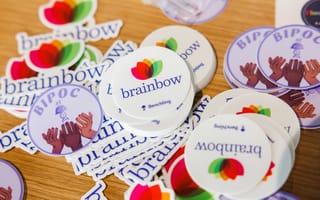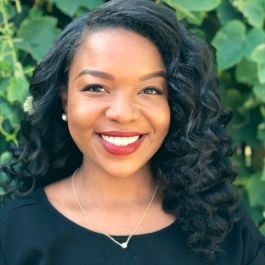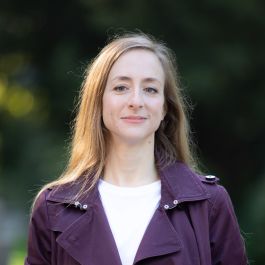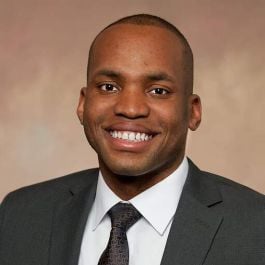When Roni McGee became Benchling’s diversity, equity and inclusion lead in 2021, she knew she wanted to begin transforming the company’s employee resource groups from affinity groups to robust and structured communities that could offer meaningful support for colleagues across the company.
As she met with ERG leaders, they voiced similar concerns — while balancing demanding and fast-paced roles, managing the responsibilities of an ERG could be taxing, and encouraging peer investment in the groups offered a challenge. Rather than seeing roadblocks, though, McGee found an opportunity to help ERG leaders add structure and clarity, which resulted in straightforward goals, focused roles and clear missions for the groups.
Meritxell Orpinell, leader of professional services for the EMEA region of Benchling and the lead for Fluoresce, the ERG for women and women-aligned individuals, found these robust ERGs offered her the opportunity to grow as a leader and connect with colleagues across the organization.
“There is an endless flow of opportunities to learn, lead and contribute to our ERGs,” Orpinell said. “Being in an ERG lead role comes with enormous responsibility — all actions and decisions, all inactions and indecisions have a direct and major impact on the community. This role keeps me grounded. There is a constant evaluation about the community needs, an extra receptivity to team morale and a continuous exercise of self-inspection on how to treat and speak to everyone fairly. By learning something new about the community, I end up learning something new about myself, which is a great boost for staying humble and eager to learn even more.”
“By learning something new about the community, I end up learning something new about myself, which is a great boost for staying humble and eager to learn even more.”
In all, leading Fluoresce offers Orpinell a singular opportunity: “A passport for continuous improvement.”
Participating in Benchling’s BIPOC (Black, Indigenous and People of Color) ERG offers Travis Mitchell, Benchling’s legal counsel, similar opportunities for both personal and professional advancement while supporting his colleagues.
While developing and hosting a panel on the experiences of Asian and Pacific Islander Americans in the workplace, he found an opportunity to expand his project management skills. “But more importantly,” he added, “the panel gave me the chance to learn about diversity with the AAPI community and how that experience differs from and mirrors my own experiences in the workplace.”
ERG leaders aren’t the only individuals finding room to grow — McGee found herself stretching while supporting their growth, as well.
“Overseeing our ERGs always provides opportunities for me to lead, grow and learn,” she said. “Our ERGs have given me the opportunity to lead in a way that empowers others rather than take over.”
ERGS AT BENCHLING
- BIPOC: Black, indigenous, people of color and allies
- Bloom: LGBTQIA+ and allies
- Fluoresce: Women, women-aligned and allies
- Brainbow: Mental health
- Nurture: Parents and allies
Building a Strong ERG Culture
As McGee noticed when she first began supporting ERG growth at Benchling, investment from across the team and the demands of leadership can be challenging to balance with the responsibilities of daily work at a fast-paced company. But, solutions for building a committed community were clear.
“Community drive and leadership commitment are equally important for success,” Orpinell said. “Finding the right balance between everyone’s official roles and the volunteer duty is key to growing an engaged, vibrant and inclusive community, and identifying the right executive sponsorship builds internal advocacy and investment in impactful ways.”
Beyond building a roster of internal champions, Orpinell found empathy and an open mind were equally instrumental to supporting the women of Fluoresce. “Not everyone has the same time, energy or passion to devote to a cause, and that is fine,” she said. “Building individual motivation becomes a contagious effect.”
CONNECTING THROUGH EXPERIENCE
For many, being a new parent in the workplace can be isolating. But for McGee and other parents at Benchling, the Nurture ERG provides a space to be reminded that they aren’t alone in the challenges of balancing work and family. “I have been reminded that I’m not alone in my sleep deprivation, and learned to give myself grace,” she said. Whether connecting with a parent of teens regarding the challenges that each stage of parenting brings or sharing advice about managing teething, McGee has found a wellspring of support from her colleagues in the ERG. “Having a community at work to talk about this new identity and all the things that come along with it has been so meaningful,” she said.
As ERGs became more deeply embedded in Benchling’s culture, the groups started serving as a “home base” for individuals within the larger community, according to Mitchell.
“Beyond our formal events and structured mentorship program, our smaller, more impromptu events have fostered a deep sense of belonging,” he said. “For example, Bloom, our LGBTQIA+ ERG, hosts monthly hangouts where members can just relax and chat with each other, and our BIPOC ERG hosts semi-regular dinners and movie watches.”
“Beyond our formal events and structured mentorship program, our smaller, more impromptu events have fostered a deep sense of belonging.”
According to McGee, this sense of belonging was a foundational goal of developing the ERGs from the beginning.
“We define belonging as feeling included, respected and connected in one’s environment,” she said. “Our ERGs help foster these feelings through curating experiences that promote learning, sharing and connecting with others in safe environments, through everything from panel discussions to listening circles and one-on-ones that center those who are members of these groups. ERGs also help foster a sense of belonging by surfacing issues that undermine belonging, ways we can improve and identifying resources that would be helpful.”
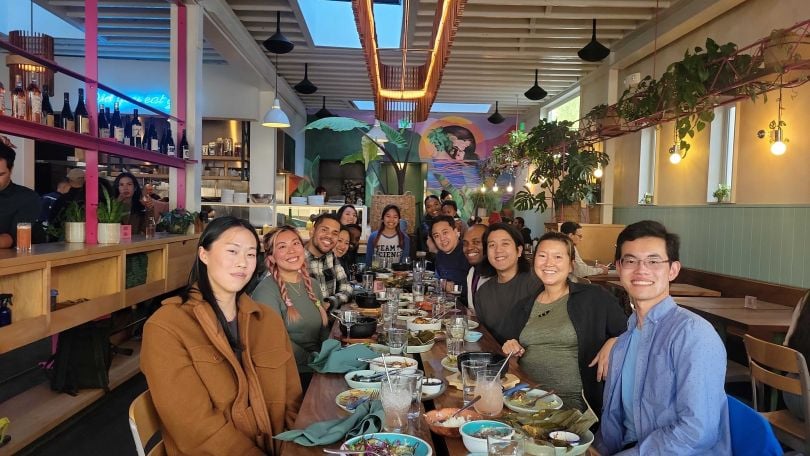
Cultivating Mission-Driven Inclusion
“Having five different ERGs provides a rich ground for different realities to be recognized, respected and embraced,” Orpinell noted, explaining that while these groups are different from one another, they are also united by a common thread: inclusion. “By definition, ERGs are not exclusive or antagonistic groups — our ERGs function in a coordinated fashion to provide a safe space where learning, inclusion, curiosity and belonging are cultivated and preserved.”This coordination is baked into the core of Benchling as an organization, Mitchell added. In its work helping biotech companies develop breakthrough products, diversity is a key factor.
“The DEI work of our various ERGs ties directly to Benchling’s identity as a company,” he said. “In our ERGs, we are always looking for ways to include more Benchlings in the conversation and make sure the organization is empathetic to the needs of others.”
“The DEI work of our various ERGs ties directly to Benchling’s identity as a company.”
Mitchell also pointed out the connection between ERGs, DEI efforts and Benchling’s leadership principles, which include “disagree and commit,” “show empathy” and “unite around the mission.”
That mission — “to unlock the power of biotechnology” — is inextricably linked to the value of learning and growth at Benchling, according to Orpinell.
“By helping scientists to excel and break paradigms, we ultimately help bring knowledge and progress to the world. By contributing to the world’s knowledge base, we increase the chances for everyone to have an informed opinion and perspective on realities that otherwise may seem remote, incomprehensible or even scary,” she said. “Our ERGs make that same contribution to Benchling.”
And McGee agrees. “Continuing to build an environment where our employees feel seen, heard and respected through our ERGs is crucial to being able to fulfill our mission.”

